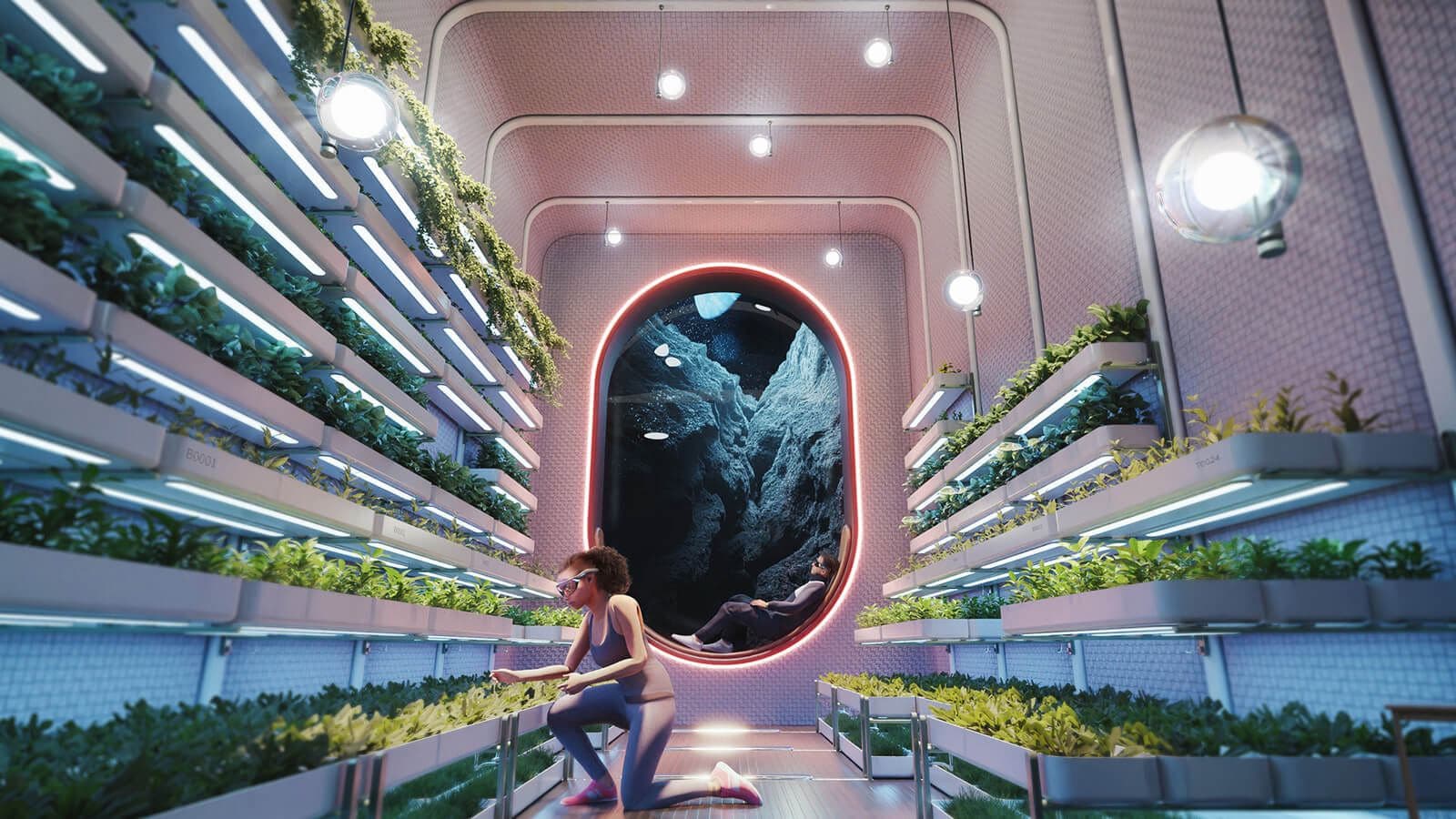5 construction-related ideas from Fast Company awards

Modular moon habitats, autonomous trucking technology and inside-out buildings are some of the advancements that the magazine highlighted in its annual list of innovations.

The Los Angeles office building called (W)rapper is one of Fast Company’s 2023 Innovation Award winners. Retrieved from Eric Owen Moss Architects on August 28, 2023
Fast Company’s 2023 Innovation Awards, an annual series dedicated to spotlighting advancements in tech across industries, offers a glimpse at the future of design and construction.
The winning ideas help solve what the magazine calls “thorny problems.”
“All of the projects are a reminder that it takes more than an algorithm to understand — and solve — humanity’s most pressing needs,” Fast Company editors wrote in its introduction.
Many of these innovations relate to construction and building design. Modular building for the moon, autonomous sensors and routing for trucks and inside-out buildings are among Fast Company’s picks of innovative tech relevant to contractors.
SensorPods
Autonomous vehicles have captured the interest of construction professionals, and Mountain View, California-based self-driving technology firm Kodiak Robotics’ SensorPods fit into that wheelhouse.
SensorPods replace a truck’s side-view mirrors, Fast Company writes, are filled with pre-calibrated and pre-built sensors and connect to Kodiak’s autonomous control system. Tech within includes LiDAR; two radars that measure distance, orientation, speed and height of objects; and three optical cameras.
The company plans to launch its first fully autonomous fleet in 2024, and will incorporate its tech into third-party fleets in 2025, according to Fast Company.
Teague’s modular moon habitat

With the federal government’s focus on returning to the moon, and as construction continues on critical NASA projects, innovations that can help develop structures in space are gaining attention.
Seattle-based design firm Teague created its Lunar Habitat, a modular and scalable design that features a wearable unit with a “natural user interface,” a complex system that remains invisible and limits the amount of materials needed at the complex, Fast Company writes.
(W)rapper
The designers of this Los Angeles office building made its structural supports visible along its exterior, an inside-out shell that also has protection benefits against earthquakes, Fast Company writes.
Designed by Eric Owen Moss Architects, the infrastructure of the building, such as the columns that keep it erect, are supported along the exterior of the building, leaving the interior wide open. In addition, the building is resilient against earthquakes — it sits on top of oversized bearings burrowed into the foundation. Following a tremblor, (W)rapper could be inhabitable within 24 hours.
450 Warren

The residents of Brooklyn, New York, apartment complex 450 Warren don’t have to walk through dreary hallways to get to their residences, writes Fast Company. Designed by architecture firm SO-IL, the 18-unit building has residents traverse from one apartment to the next through a series of open-air walkways in the building’s hollow core, which is open to the elements.
Tenants enter through a large atrium with staircases that lead to the building’s upper floors, per Fast Company. Unit prices started at $1.7 million, but all were sold prior to the building’s opening in spring 2022.
Flyt permeable pavers
As flooding continues to be a critical issue across the world as a result of climate change and extreme weather patterns, Norwegian architecture firm Snøhetta has a solution — spaced out hexagonal paver blocks that interlock at different distances and help the ground soak up more water.
The blocks are spaced 2.3 inches apart, which allows the ground below to absorb more rainwater, according to Fast Company. The stones can be installed in public spaces and in areas of varying foot traffic — smaller gaps for busier areas and larger gaps for quieter ones. The interlocking stones come in sizes of 240, 250 and 280 millimeters, according to Snøhetta’s website.
This article was originally written by Matthew Thibault and appeared here.


Comment (0)